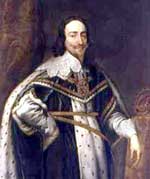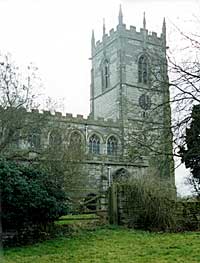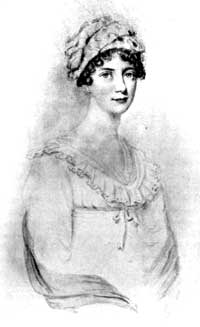Fines for helping Charles I ruined Nottinghamshire landlord

King Charles I.
WITH the surrender of Charles I at Southwell on May 5th, 1646, the first of the two Civil Wars was over. Next day, he was taken to the Scottish headquarters at Kelham where the camp of the besiegers of Newark broke up.
The king spent that night as a prisoner here, probably in the manor house of the Williamsons, and the Scots Commander, the Earl of Leven, before setting out with Charles to the north issued a stringent order against looting or compelling the service of inhabitants.
Sir Thos. Williamson may not have been there to wish his royal master God speed as they marched out in the morning, for he was a delinquent and his estates had been sequestrated. To the parliamentarians he was a heinous offender.
He had been a commissioner of array to provide troops for the royal army; as sheriff he had diverted money for the defence of Newark, and throughout the war he had been a staunch cavalier.
For part of his property (which may have been at East Markham) he was assessed to pay £1,000 for its recovery, but he pleaded great debts and after two years' consideration it was returned for £469.
He had other liabilities to face as the price of loyalty, for which he was fined £3,400; the penalty submerged him, and in 1670 his son found himself compelled to sell the manor to his son-in-law, John White, of Tuxford, and his own brother, for £1,000.
RESTORATION TIMES.
Within a few years of the Restoration the Mellishes of Ragnall had the Soke of Dunham and its belongings here, and the passing of the Markhams was soon followed by the advent of the Kirkes, who acquired Mirfield flail in 1681. Members of this family served the State as soldiers or in other ways, and under George III Col. Kirke sold the mansion to the Cartwrights—only for a grandson to buy it back in 1835.
A house licensed for nonconformist worship in 1672 had to be closed in the following year when the king's personal Declaration of Indulgence was declared illegal.
The Quaker Gratton was pelted with stones and rotten eggs in 1674 but his second visit was more agreeable and two men sent by the vicar to break up, his meetings were so affected by his discourse that they left him undisturbed.
There were 300 adults in the parish this parson stated in 1676, with few who failed to come to church, but these suffered persecution until 1689 when the Act of. Toleration brought relief and a conventicle was permitted. Within half a century it had fallen out of use.
WAS THE MONARCH MERRY?
The vicar of 1690 recorded in, his registers that William III was here on January 14th. Other sources tell that when His Majesty arrived at Lincoln he was so "fresh" with wine that nis meal was restricted to a porringer of milk, and he was probably not at his best when his faithful subjects beheld him at Markham on his way to Welbeck.
Somewhere about this time the Whites purchased the Williamson's properties. In 1714 the future Bishop Warburton was indentured as a law student here to "John Kirke, gent." and it may have been to his advantage when this eminent Newarker abandoned jurisprudence for divinity. In that year John Gunthorpe founded the chief charity of the village, a school whose master's salary was £6 per annum until 1811 when the amount was increased to £10.
Plague in East Markham gave a market to Tuxford
THE State Papers record that when the rebels of 1536 approached the Trent on their southward march Lord Burgh raided East Markham and carried away the villagers' arms. He was lord of the Soke of Dunham, had fought for Henry VIII at Flodden, and had borne the train of Ann Boleyn at her wedding to the king. Sir John Markham warned his tenants to be ready to help the king and Lord Burgh threw in his lot with the insurgents.
He was more fortunate than some other Notts, men, and managed to save his life and possessions. The Cressys and Topcliffes held from him here, and other local owners included the Porters and Foljambes.
At the suppression of the chantries in 1547, it was reported that the parish had 400 "houseling people" and that the inhabitants were, maintaining at their own cost a chantry priest whose stipend was £3 17s. 6d. It was "a greatte parisshe" and the priest assisted the vicar to serve the cure.
At the Dissolution Westminster Abbey lost its rights in the parish church; Queen Mary restored them but they soon passed to the Earl of Shrewsbury.
The year of the accession of Queen Elizabeth (1558) was eventful for Markham as it was then that the Williamsons acquired the Topcliffe possessions. In the following year when Archbishop Sandys held a visitation to enquire into the observance of the Protestant ritual in Notts, churches, it was found that the parish had no vicar and the vacancy was filled.
DENOUNCED AS COWARD.
The Portand MSS relate that Gervase Markham challenged Sir John Holles (later 1st Earl of Clare) to a duel on Coddington racecourse, but Sir John, while accepting the challenge, declined that venue as it belonged to Markham's patron, the Earl of Shrewsbury, and was not neutral ground.
It was then proposed that they should ride together with their seconds fight on Markham Moor. Markham ignored the suggestion and proceeded in his coach to Coddington, taking with him his, "winding sheet and such other provisions as men make who are careful for their honest buriall." As Holles did not appear, he was denounced at the crosses in Nottingham, Newark and Retford as a coward.
RUN THROUGH THE BODY.
Subsequently the pair accidently met near Haughton and in the impromptu duel then fought Markham was run through the body. The Earl of Shrewsbury raised a force of tenantry to arrest the victor at Haughton Hall but proceedings were stayed upon the wounded man's recovery.
At the death of Queen Elizabeth in 1603 the parish had 290 adults and according to Dr Wood's careful computation the total, inclusive of children would be about 464.
PLAGUE KILLED A MARKET.
Two notable events marked the early years of the reign of James I. In 1606, the ruined Sir Robert Markham sold his remaining interests here to the Williamsons and Sir Wm. Hewet of Shireoaks.
Three years later the village was desolated by a plague of such virulence that 113 victims perished and the market was removed to Tuxford, from which it has never returned.
Early in the reign of Charles I Sir John Holles, now Earl of Clare, purchased the rectories of East and West Markham for £2,715.
East Markham is Nottinghamshire's premier fruit-growing village

The tower of East Markham church.
EAST MARKHAM church is a fine example of embattled perpendicular work, restored in 1883 (when the aisles were rebuilt and old fittings removed), and repaired in 1896 and 1907. The tower is massive and a fine clerestory surmounts the four bays of the nave.
In the 18th and 19th centuries much of its ancient glass, was parted with in vandal fashion, few remains being spared. Some good modern windows including that by Comper at the east end partly atone for that default.
CHURCH ORNAMENTS.
The roodscreen, probably cut down in the 17th century, was inserted in the south aisle in 1897, and the blocked-up old stairway has been converted into a chimney. There are quaint gargoyles; monuments of the Markhams, Williamsons and Kirkes, with a fine brass to Millicent, second wife of Judge Markham, who died in 1419. A pre-Reformation stone altar is now in the north aisle; the altar-rails and pulpit date from 1686 as also do the bowl and carved cover of the foot which rests upon a 600-year-old base of curiously carved stone legs.
BISHOP AND WOMAN WRITER.
In 1801, some of the 665 inhabitants were cultivating hops for Tuxford market; others were growing rye or reducing gypsum to plaster. The moor was enclosed in 1810 and a decade later the Duke of Newcastle bought the Whites' manor for £25,000.

Mrs Markham (1780-1837).
William Markham who was Archbishop of York from 1777 to 1807 was a descendant of the Markhams of Markham, but the lady who achieved literary fame as 'Mrs. Markham' was a daughter of the inventor-clergyman, Edmund Cartwright, of Marnham.
Until her marriage in 1814 she spent much of her life with her aunts at Mirfield Hall and within its walls she wrote the best known of her works— 'Mrs Markham's History of England,' a standard text book for schools for somedecades.
According to Curtis, Mr. J. J, Angerstein, whose collection formed the basis of the National Gallery, owned the Mirfield Hall estate in 1844. Two years earlier the old post-mill was destroyed by fire and a new one was built, and within a few years desolation befel the old posting inn at Markham Moor, the railway stealing its traffic; much of its extensive stabling wastransformed into cottages.
THE VILLAGE TO-DAY.
The present century opened with 696 inhabitants, a number which had increased to 872 by 1931. In 1922 a picturesque pond at a roadway junction had to be filled in as it was dangerous to the increased traffic, and in 1937, when the Great North Road was widened throughout Notts, to 120ft., the irst stretch dealt with was that from Markham to Barnby Moor. The village has clung to its old customs—its feast and Christmas mummers, but side by side with this conservatism it has developed the manufacture of agricultural vehicles and other farming necessities.
No parish in the shire shows such a large acreage of orchards. Fruitgrowing is, indeed, a staple industry.
